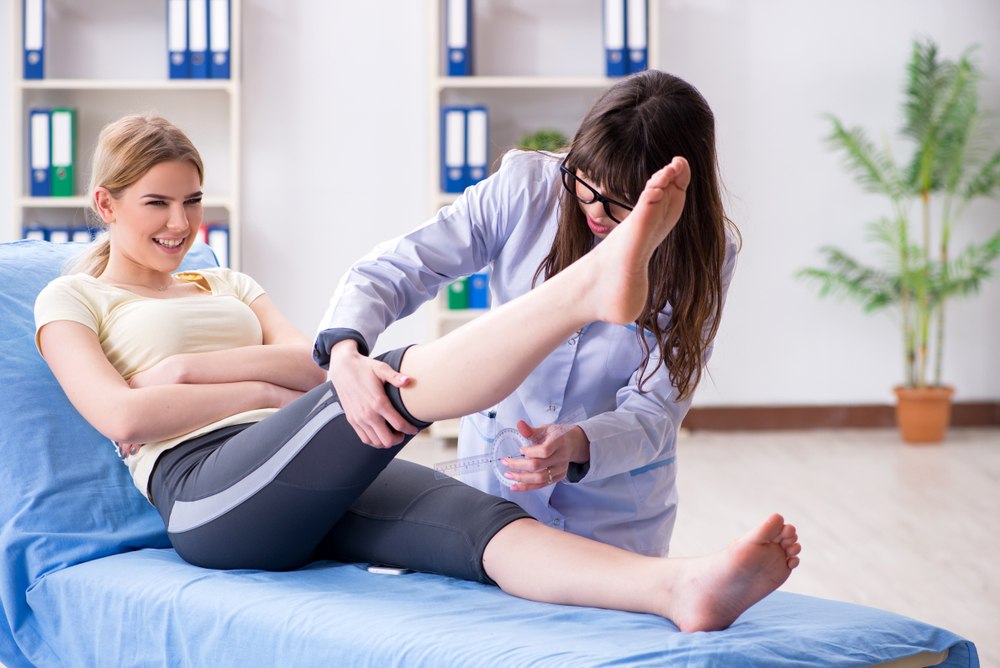Deep Vein Thrombosis – Diagnosis And Treatment
Deep Vein Thrombosis – Diagnosis and treatment
Deep Vein Thrombosis is a condition where a blood clot occurs in one of the deeper veins in the body; usually in the legs. Deep vein thrombosis leads to symptoms such as swelling, cramps, and leg pain. In a few rare cases, there are no symptoms of deep vein thrombosis.
This ailment develops if you have a medical condition that affects the way your blood clots. If you do not move for a long time after an accident or surgery, you may experience deep vein thrombosis. It can have serious consequences as the blood clots can break and cause blockage in your lungs as well.

What is deep vein thrombosis?
- Deep vein thrombosis refers to the formation of a blood clot in the vein located in the deeper parts of the body. The clot is a blood clump that is in a solid state. It is most commonly found in the regions of the lower leg and thigh. A clot can also form in other parts of the body.
- Deep vein thrombosis is also called post-thrombotic syndrome, thromboembolism, and postphlebitic syndrome.
Who can have deep vein thrombosis?
Anyone over the age of 50 is at a high risk of deep vein thrombosis. There are certain conditions that affect how the blood flows through the veins and increase the risk of clots.
- A family history of DVT
- A catheter placed in a vein
- An injury such as a bone fracture causing any damage to the vein
- Obesity which increases the pressure on the veins in the legs
- Smoking
- Hormone therapy
- Birth control pills
- Being seated for long durations of time
- There are also certain diseases that can increase the risk of DVT. These include conditions such as IBD and cancer.
- An individual undergoing surgery will have the risk of DVT.
- Pregnancy causes an increase in the hormone and sugar levels which again increase the risk of DVT.
What are the symptoms of deep vein thrombosis?
There are a few symptoms that occur in patients that suffer from this condition. However, in some cases, there may not be any clear symptoms and you have to monitor your health carefully.
- Swelling in the ankle, leg, and foot on one side alone
- Severe pain in the ankle and foot
- Painful cramps in the leg that is affected
- One part in the skin feels warmer when compared to the surrounding areas
- Discoloration of the skin over the affected area.
The condition is often recognized only after an emergency pulmonary embolism treatment is done. It is a life-threatening condition which is a complication caused by DVT.
When Should You See A Doctor?
- Deep Vein Thrombosis is a serious condition that needs immediate medical attention and care.
- If you think you are experiencing any of the symptoms, you need to seek help and find out if you’re qualified for treatment. You can visit the nearest emergency room and let them guide you.
- After a thorough check of your symptoms and health history, a deep vein thrombosis diagnosis is done where the doctor suggests the best mode of treatment.
What treatments can be explored for deep vein thrombosis?
The focus of the treatment is to ensure the clot does not grow. The treatment will also ensure that there is no pulmonary embolism.
- Medicines
There is deep vein thrombosis medication available which makes the blood thin and prevents clotting. These include warfarin, heparin, fondaparinux, and enoxaparin. Even the existing clots can decrease with this deep vein thrombosis treatment.
- Compression stockings
Wearing these stockings can prevent swelling and clots. These stockings reach below the knee and should be worn every day.
- Filters
Filters might have to be added inside a vein called vena cava if blood thinners don’t help. This is a deep vein thrombosis treatment which prevents the clots from entering the lungs. Leaving the filters over a long time can cause DVT. It is a short-term treatment that can be used to reduce the clotting.
What are the complications of deep vein thrombosis?
The major complication of this condition is a pulmonary embolism. This may occur if the clot moves to the lungs causing serious damage to the body. You need critical help if you have any of the following signs.
- Sweating
- Dizziness
- Rapid breathing
- Pain in the chest
- Increase in heart rate
- Coughing blood

